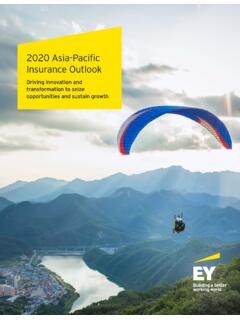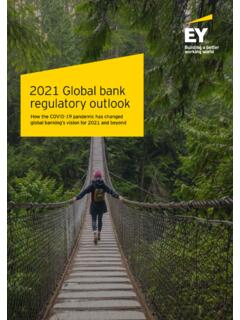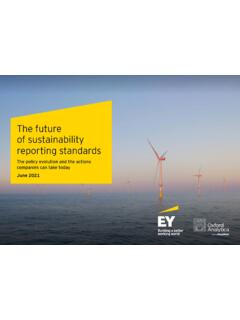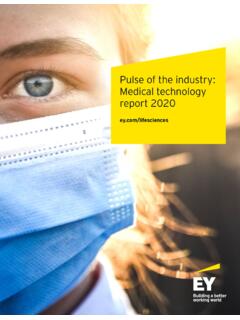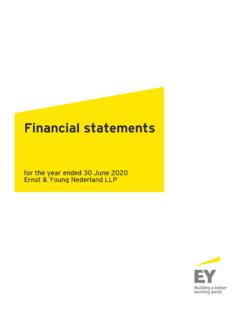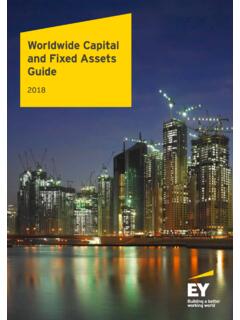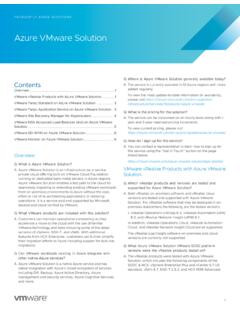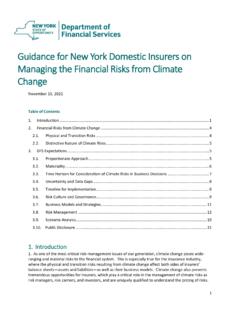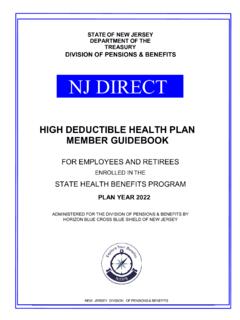Transcription of What audit committees need to know for year‑end 2021 (pdf)
1 What audit committees need to know for year end 2021 and beyondEY Center for Board MattersThis 2021 edition of our annual review of issues affecting audit committees during the year end audit cycle summarizes key considerations for audit committees . With the changing risk landscape, the audit committee s role continues to grow more demanding and complex amid the pandemic and a dynamic business environment. This report will assist audit committees to proactively address developments in risk management, financial reporting, tax, and the regulatory landscape. What audit committees need to know for year end 2021 and beyondContentsIntroduction03 Risk management11 Financial reporting16 Tax and other policy related developments21 Regulatory developments25 Questions for audit committees to considerAfter a protracted period of operating in survival and stabilization mode, organizations are now turning their attention to enhancing enterprise resiliency, growth and transformation.
2 A recent EY study noted that 68% of organizations plan a major investment in data and technology in the next 12 months, and 61% plan to undertake a major transformation initiative. Risk management1 Directors rank unfavorable economic conditions, technology and digital disruption, and changing customer expectations as the top three risks that will moderately impact their business during the next 12 months. Additionally, changing customer expectations, climate change and sustainability, and changes in the regulatory environment are noted as the top three risks that have grown in importance as compared with the p r i o r ye a r. Directors noted a misalignment between corporate culture and strategy as the greatest workforce related risk management challenge. Given the hypercompetitive labor market and the need to contend with business transformations, it is not surprising that board oversight of talent and culture has risen in importance.
3 In fact, our study shows that 80% of companies considered leaders on risk management often or always talk at board meetings about the culture needed to support the organization s strategy. Despite the criticality of risk management, many board members lack confidence in their organization s capabilities. For example, just 18% believe that their organization s disaster response and contingency planning is highly effective, and only 13% believe that their organization is highly effective at embedding risk and compliance activities. As companies build enterprise resiliency and revisit their risk management practices, audit committees and boards should continue to monitor the risk landscape and assess implications to the company. The rapidly changing economic conditions, including inflationary pressures and ongoing supply chain disruption, have made understanding the current business environment and predicting future conditions challenging especially since the economic recovery remains uneven across geographies and sectors.
4 Over the last 18 months, resilience across these existing and new risk dimensions has become a defining characteristic of long-term success and a key business imperative for organizations globally. Financial and operational resilience were rigorously tested, and those who had built greater and higher quality capital and liquidity were in stronger positions going into the pandemic. The need for greater technological resilience was driven by greatly accelerated moves to transform digitally. Human capital issues, workforce resiliency and employee well being became key focus areas. At the same time, societal and environmental resilience became an elevated focus as organizations paid closer attention to diversity and equity in society and the accelerating impacts of climate due to growing regulatory pressure or the disruptions caused by COVID 19, risk management has climbed higher on the board agenda. We recently surveyed 510 global directors to uncover the views and perceptions of directors on enterprise risk management within their organization and the hallmarks of effective risk management, and identify the actions boards can take to improve risk oversight.
5 Some notable survey highlights include the following: COVID 19 was not only a major risk event in itself it was also an accelerator of risks that were already omnipresent, including cybersecurity attacks, supply chain disruption, geopolitical tension, and other external threats. Nearly 83% of board members believe market disruptions have become increasingly impactful, and 87% believe they have become increasingly frequent. Core attributes of high performing risk management leaders include three key behaviors: risk is viewed through a long term horizon (ideally more than five years); risk management priorities are aligned with business strategy; and there is a greater focus on managing emerging risks , atypical risks and external growing focus on enterprise resiliencyBoards and audit committees are revisiting risk management practices to see that risks are managed effectively across the organization. They re also building more resiliency toward low likelihood and high-impact risks , including the ability to rapidly restore business operations.
6 Given the likely continued waves of disruption ahead, leading organizations are making investments to drive resiliency into their long-term strategies and operating the last 18 months, resilience across these existing and new risk dimensions has become a defining characteristic of long-term success and a key business imperative for organizations globally. What audit committees need to know for year end 2021 and beyondEY Center for Board Matters04 Competition The Biden administration has established a policy goal to promote competition in the US economy and reduce corporate consolidation. President Biden signed an executive order (EO) in July on corporate consolidation and anticompetitive practices in various markets, including labor, health care, transportation, agriculture, internet service, tech platforms, and banking and consumer finance. The order also created the White House Competition Council, tasked with coordinating, promoting and advancing federal government efforts to address overconcentration, monopolization and unfair competition affecting the US economy.
7 The EO does not impose new requirements on the business community, but instead encourages agency heads to adopt policies through rulemakings that push back against corporate consolidation. In Congress, there is bipartisan interest in reinvigorating antitrust laws, specifically in relation to the tech sector, although legislative progress has stalled due to disagreements over approach. Companies should monitor developments regarding antitrust reform and be prepared for increased scrutiny of M&A activity across sectors. Cybersecurity The Biden administration has been active in seeking to strengthen cybersecurity, particularly in light of several recent high profile cyberattacks on companies and the federal government. In addition to issuing an executive order aimed at strengthening the US government s cybersecurity defenses, the Biden administration is working with stakeholders to promote voluntary efforts by the private sector to strengthen their cyber defenses and collaborate with the government in combating ransomware.
8 Cybersecurity is also on the radar of Congress and federal financial regulatory agencies, including the Securities and Exchange Commission (SEC), which is developing a proposed rule to require new disclosures relating to cybersecurity risk governance. Companies should consider whether their cybersecurity defenses need to be strengthened and monitor regulatory and legislative developments in this chain The resiliency of US supply chains is another area of focus for the Biden administration in light of shortages of critical materials during the pandemic and beyond. In June 2021, the administration released findings from a 100 day interagency domestic supply chain assessment of four critical products critical minerals, large capacity batteries, pharmaceuticals and semiconductors and outlined steps it will take to strengthen those supply chains and shore up domestic manufacturing. In addition to the 100 day review, the administration also is undertaking yearlong reviews of six broader sectors, which will be published in February 2022.
9 These sectors are agricultural commodities and food production, defense, energy, information and communications technology, public health, and transportation. Companies in these sectors should monitor potential policy shifts ranging from government tax incentives to restrictions such as export controls. Companies may also consider conducting scenario analyses in relation to diversifying, insourcing or retaining domestic supply chain capabilities. Key priorities of the Biden administration As audit committees and boards navigate fast moving policy developments and a dynamic political environment, understanding policy and geopolitical forces and their impact on strategy and risks has become critical. Key considerations that may impact public companies in light of the evolving public policy landscape are as follows:In Congress, there is bipartisan interest in reinvigorating antitrust laws, specifically in relation to the tech sector, although legislative progress has stalled due to disagreements over approach.
10 What audit committees need to know for year end 2021 and beyondEY Center for Board Matters05 Sustainability Companies should consider a comprehensive assessment of their risks , opportunities and disclosures associated with climate change given the increase in regulatory focus on these areas. Early in his administration, President Biden issued an executive order on climate-related financial risk to encourage financial regulators to strengthen supervision of climate related risk, including through disclosures. The order also directed the Financial Stability Oversight Council (FSOC), comprising the heads of US financial regulatory bodies, to issue a report on the impacts of climate change on the US economy. The report states that climate change is an emerging threat to the country s financial system and provides a series of recommendations about how to address the risks and opportunities to the financial system of transitioning to a less carbon intensive economy.

